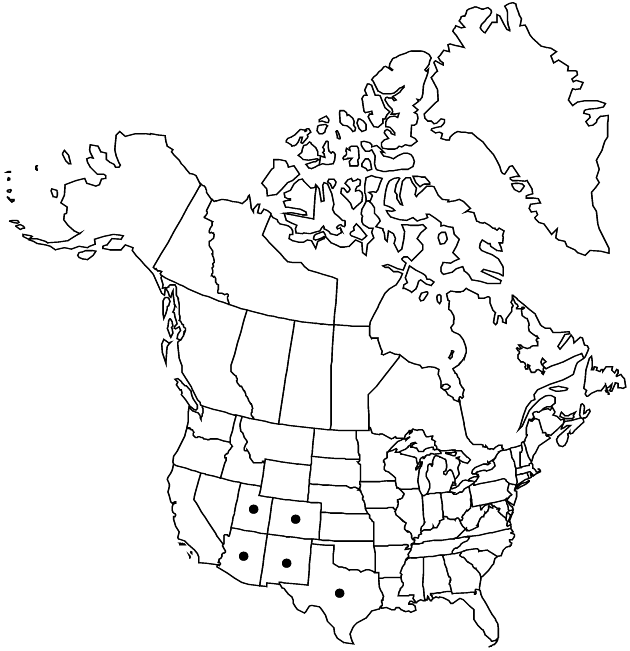Difference between revisions of "Hymenoxys richardsonii var. floribunda"
Madroño 10: 159. 1950.
Common names: Colorado rubberweed olivaceous bitterweed
Endemic
Basionym: Actinella richardsonii var. floribunda A. Gray Mem. Amer. Acad. Arts, n. s. 4: 101. 1849
FNA>Volume Importer |
imported>Volume Importer |
||
| (6 intermediate revisions by 2 users not shown) | |||
| Line 8: | Line 8: | ||
}} | }} | ||
|common_names=Colorado rubberweed;olivaceous bitterweed | |common_names=Colorado rubberweed;olivaceous bitterweed | ||
| − | |basionyms={{Treatment/ID/ | + | |special_status={{Treatment/ID/Special_status |
| + | |code=E | ||
| + | |label=Endemic | ||
| + | }} | ||
| + | |basionyms={{Treatment/ID/Basionym | ||
|name=Actinella richardsonii var. floribunda | |name=Actinella richardsonii var. floribunda | ||
|authority=A. Gray | |authority=A. Gray | ||
| + | |rank=variety | ||
| + | |publication_title=Mem. Amer. Acad. Arts, n. s. | ||
| + | |publication_place=4: 101. 1849 | ||
}} | }} | ||
|synonyms= | |synonyms= | ||
| Line 35: | Line 42: | ||
-->{{#Taxon: | -->{{#Taxon: | ||
name=Hymenoxys richardsonii var. floribunda | name=Hymenoxys richardsonii var. floribunda | ||
| − | |||
|authority=(A. Gray) K. F. Parker | |authority=(A. Gray) K. F. Parker | ||
|rank=variety | |rank=variety | ||
| Line 49: | Line 55: | ||
|publication title=Madroño | |publication title=Madroño | ||
|publication year=1950 | |publication year=1950 | ||
| − | |special status= | + | |special status=Endemic |
| − | |source xml=https:// | + | |source xml=https://bitbucket.org/aafc-mbb/fna-data-curation/src/2e0870ddd59836b60bcf96646a41e87ea5a5943a/coarse_grained_fna_xml/V19-20-21/V21_1104.xml |
|tribe=Asteraceae tribe Heliantheae | |tribe=Asteraceae tribe Heliantheae | ||
|subtribe=Asteraceae (tribe Heliantheae) subtribe Gaillardiinae | |subtribe=Asteraceae (tribe Heliantheae) subtribe Gaillardiinae | ||
Latest revision as of 20:08, 5 November 2020
Plants 19–34 cm. Stems (2–)5–20(–30+), glabrous or ± hairy. Leaves glabrous or sparsely hairy. Heads (30–)80–250(–300+) per plant. Involucres 7–8 × 7–9 mm. Phyllaries: outer 8–9, strongly keeled, obovate, ovate, or lanceolate, 3.5–6 mm, apices acute; inner 8–12, 3–5 mm. Ray florets 7–9; corollas 7–11 mm. Disc florets 25–50+; corollas 3–4 mm. Cypselae 2 mm; pappi of (4–)5 obovate, aristate scales 1.8–2.8 mm. 2n = 30.
Phenology: Flowering (May–)Jul–Aug(–Oct).
Habitat: Roadsides, open areas, edges of forests
Elevation: (1600–)1800–2700(–3400) m
Distribution

Ariz., Colo., N.Mex., Tex., Utah.
Discussion
Selected References
None.
Lower Taxa
None.